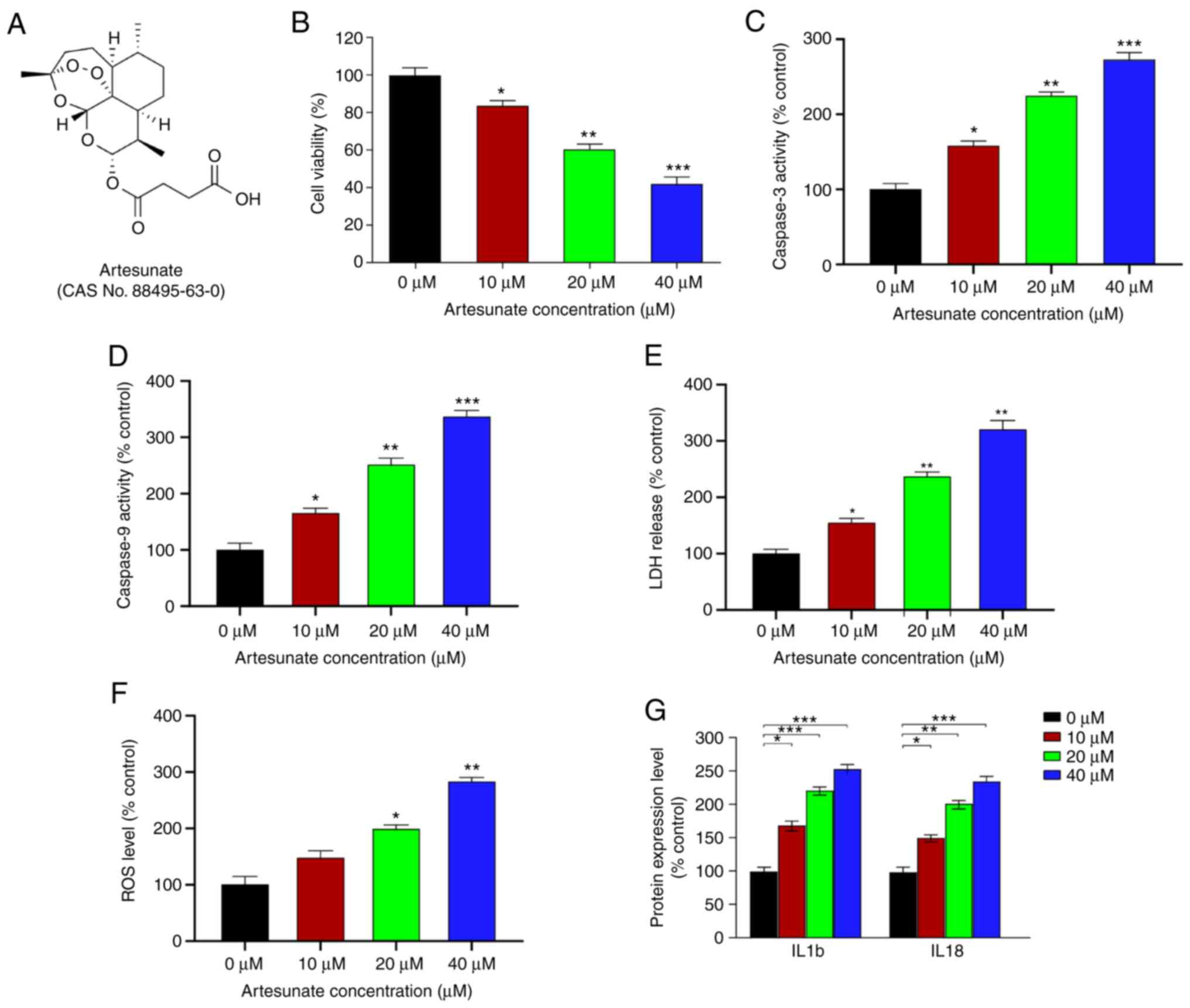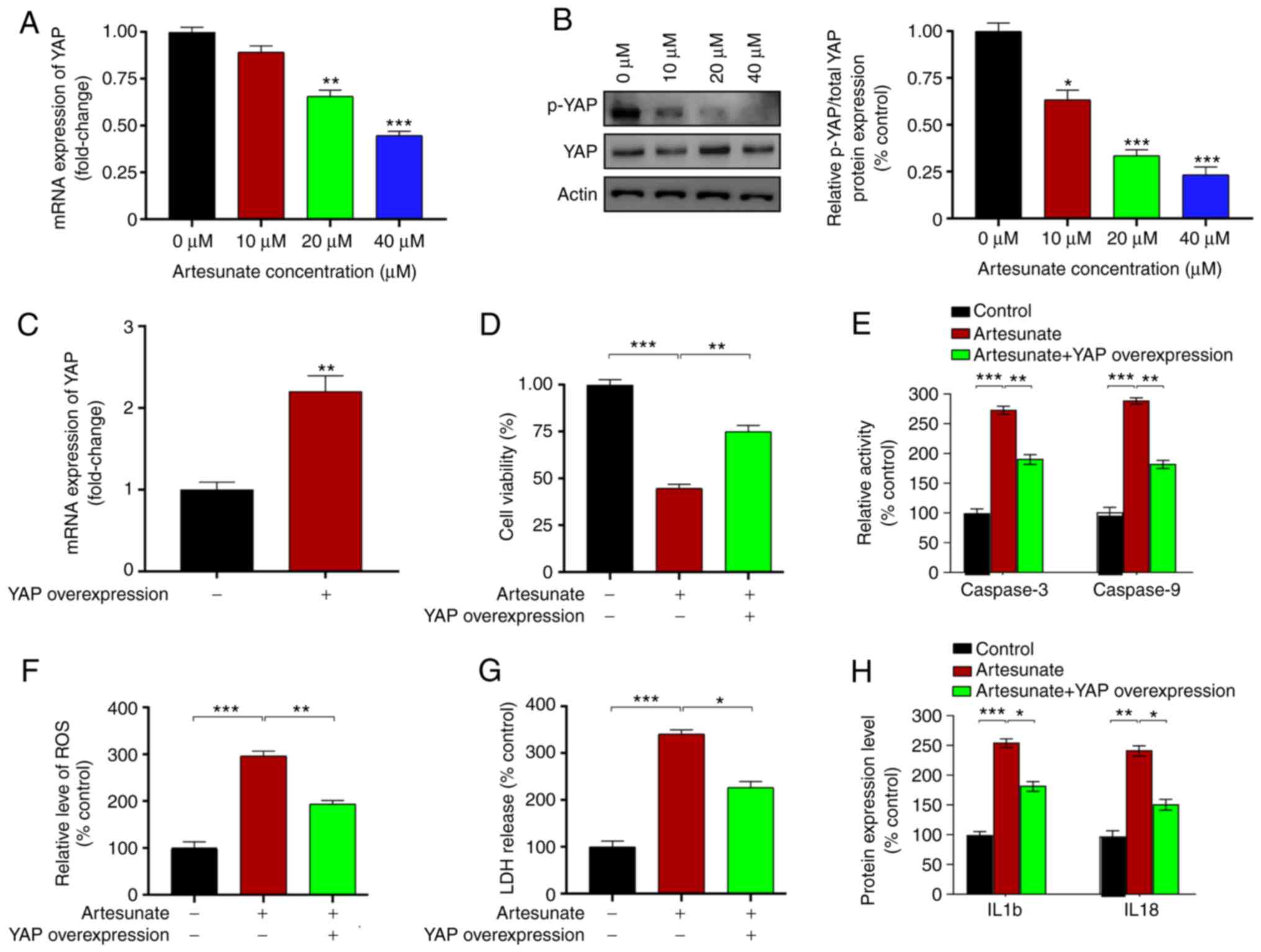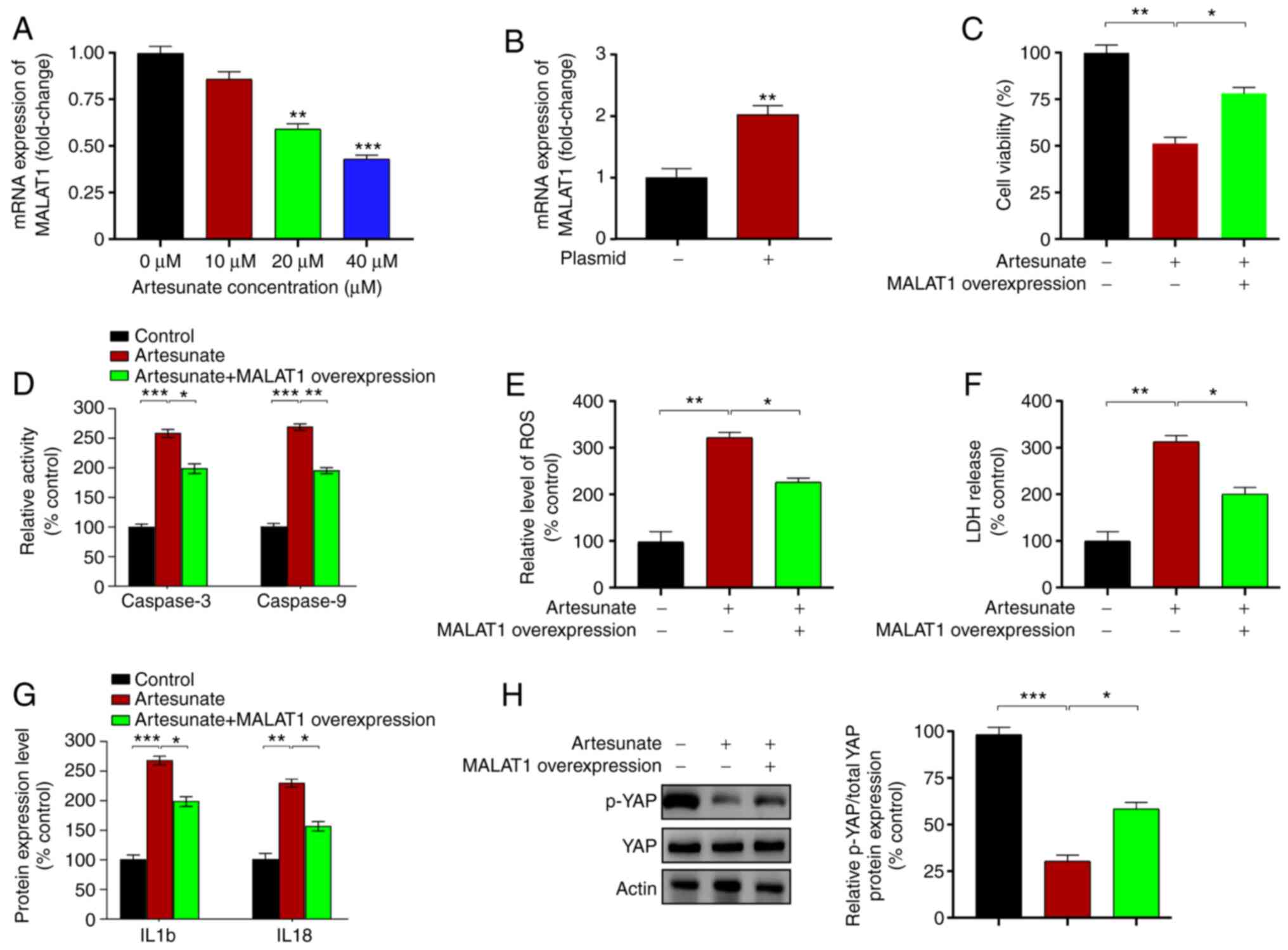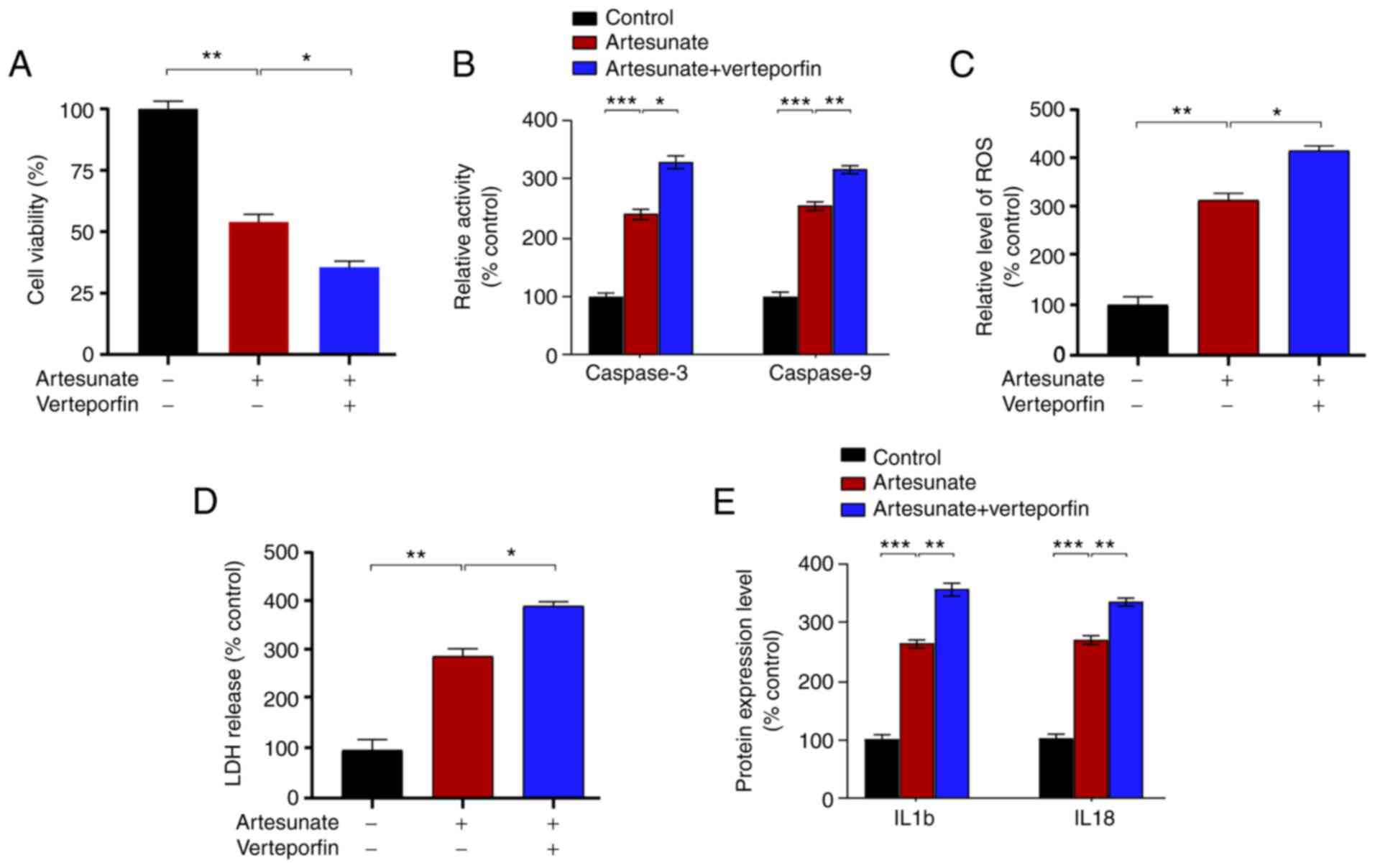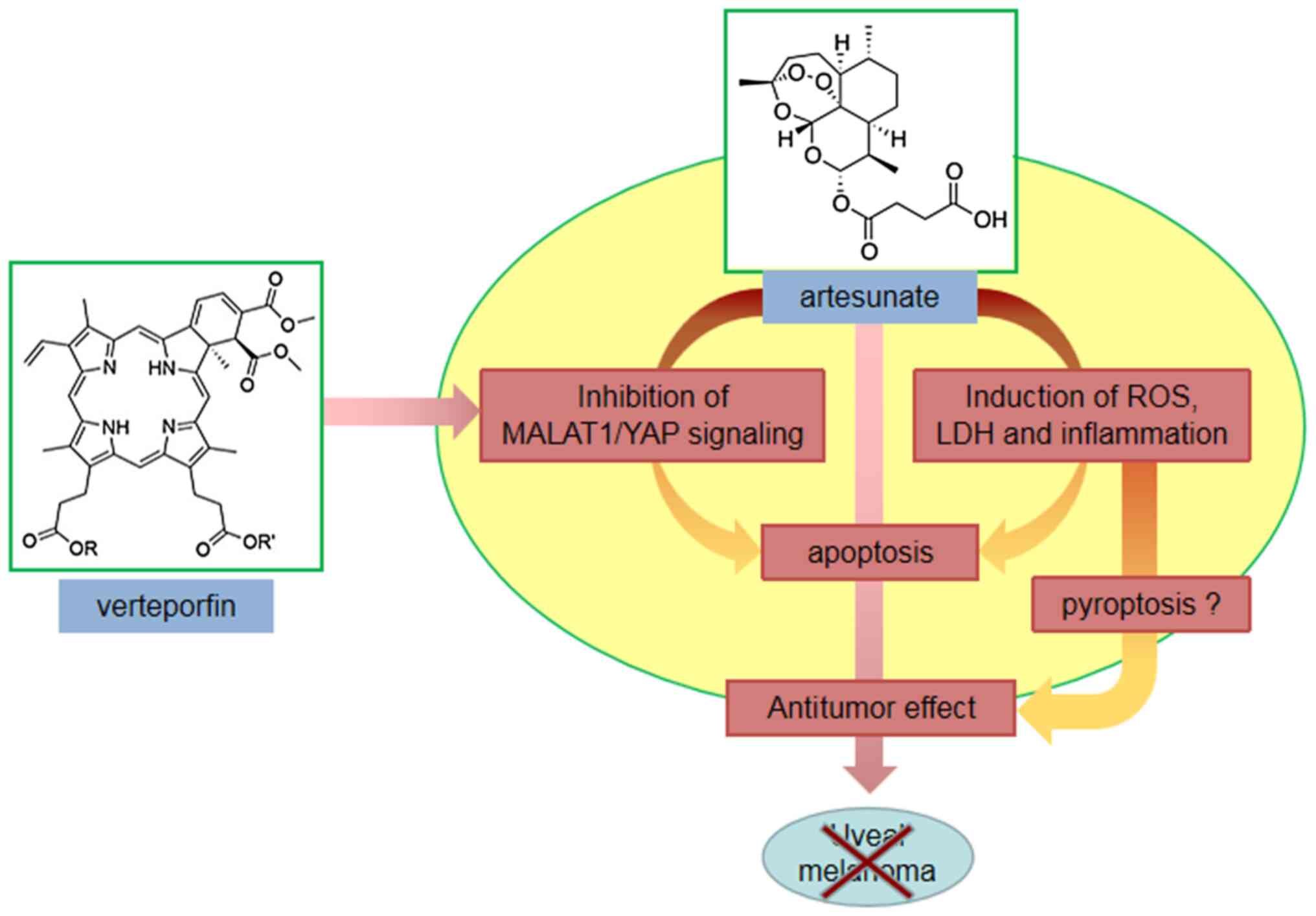|
1
|
McLaughlin CC, Wu XC, Jemal A, Martin HJ,
Roche LM and Chen VW: Incidence of noncutaneous melanomas in the
U.S. Cancer. 103:1000–1007. 2005. View Article : Google Scholar : PubMed/NCBI
|
|
2
|
Ortega MA, Fraile-Martinez O,
Garcia-Honduvilla N, Álvarez-Mon M, Buján J and Teus MA: Update on
uveal melanoma: Translational research from biology to clinical
practice (review). Int J Oncol. 57:1262–1279. 2020. View Article : Google Scholar : PubMed/NCBI
|
|
3
|
Landreville S, Agapova OA and Harbour JW:
Emerging insights into the molecular pathogenesis of uveal
melanoma. Future Oncol. 4:629–636. 2008. View Article : Google Scholar : PubMed/NCBI
|
|
4
|
Singh AD, Bergman L and Seregard S: Uveal
melanoma: Epidemiologic aspects. Ophthalmol Clin North Am. 1875–84.
(viii)2005. View Article : Google Scholar : PubMed/NCBI
|
|
5
|
Chandran SS, Somerville RPT, Yang JC,
Sherry RM, Klebanoff CA, Goff SL, Wunderlich JR, Danforth DN, Zlott
D, Paria BC, et al: Treatment of metastatic uveal melanoma with
adoptive transfer of tumour-infiltrating lymphocytes: A
single-centre, two-stage, single-arm, phase 2 study. Lancet Oncol.
18:792–802. 2017. View Article : Google Scholar : PubMed/NCBI
|
|
6
|
Basile MS, Mazzon E, Russo A, Mammana S,
Longo A, Bonfiglio V, Fallico M, Caltabiano R, Fagone P, Nicoletti
F, et al: Differential modulation and prognostic values of
immune-escape genes in uveal melanoma. PLoS One. 14:e02102762019.
View Article : Google Scholar : PubMed/NCBI
|
|
7
|
Petralia MC, Mazzon E, Fagone P, Russo A,
Longo A, Avitabile T, Nicoletti F, Reibaldi M and Basile MS:
Characterization of the pathophysiological role of CD47 in uveal
melanoma. Molecules. 24:24502019. View Article : Google Scholar : PubMed/NCBI
|
|
8
|
Basile MS, Mazzon E, Fagone P, Longo A,
Russo A, Fallico M, Bonfiglio V, Nicoletti F, Avitabile T and
Reibaldi M: Immunobiology of uveal melanoma: State of the art and
therapeutic targets. Front Oncol. 9:11452019. View Article : Google Scholar : PubMed/NCBI
|
|
9
|
Naing A, Papadopoulos KP, Autio KA, Ott
PA, Patel MR, Wong DJ, Falchook GS, Pant S, Whiteside M, Rasco DR,
et al: Safety, antitumor activity, and immune activation of
pegylated recombinant human interleukin-10 (AM0010) in patients
with advanced solid tumors. J Clin Oncol. 34:3562–3569. 2016.
View Article : Google Scholar : PubMed/NCBI
|
|
10
|
Parker T, Rigney G, Kallos J, Stefko ST,
Kano H, Niranjan A, Green AL, Aziz T, Rath P and Lunsford LD: Gamma
knife radiosurgery for uveal melanomas and metastases: A systematic
review and meta-analysis. Lancet Oncol. 21:1526–1536. 2020.
View Article : Google Scholar : PubMed/NCBI
|
|
11
|
Selumetinib shows promise in metastatic
uveal melanoma. Cancer Discov. 3:OF82013. View Article : Google Scholar
|
|
12
|
Pelster MS, Gruschkus SK, Bassett R,
Gombos DS, Shephard M, Posada L, Glover MS, Simien R, Diab A, Hwu
P, et al: Nivolumab and ipilimumab in metastatic uveal melanoma:
Results from a single-arm phase II study. J Clin Oncol. 39:599–607.
2021. View Article : Google Scholar : PubMed/NCBI
|
|
13
|
Carvajal RD, Piperno-Neumann S, Kapiteijn
E, Chapman PB, Frank S, Joshua AM, Piulats JM, Wolter P, Cocquyt V,
Chmielowski B, et al: Selumetinib in combination with dacarbazine
in patients with metastatic uveal melanoma: A phase III,
multicenter, randomized trial (SUMIT). J Clin Oncol. 36:1232–1239.
2018. View Article : Google Scholar : PubMed/NCBI
|
|
14
|
Judd R, Bagley MC, Li M, Zhu Y, Lei C,
Yuzuak S, Ekelöf M, Pu G, Zhao X, Muddiman DC and Xie DY:
Artemisinin biosynthesis in non-glandular trichome cells of
artemisia annua. Mol Plant. 12:704–714. 2019. View Article : Google Scholar : PubMed/NCBI
|
|
15
|
Dondorp AM, Fanello CI, Hendriksen IC,
Gomes E, Seni A, Chhaganlal KD, Bojang K, Olaosebikan R, Anunobi N,
Maitland K, et al: Artesunate versus quinine in the treatment of
severe falciparum malaria in African children (AQUAMAT): An
open-label, randomised trial. Lancet. 376:1647–1657. 2010.
View Article : Google Scholar : PubMed/NCBI
|
|
16
|
Vivas L, Rattray L, Stewart L, Bongard E,
Robinson BL, Peters W and Croft SL: Anti-malarial efficacy of
pyronaridine and artesunate in combination in vitro and in vivo.
Acta Trop. 105:222–228. 2008. View Article : Google Scholar : PubMed/NCBI
|
|
17
|
Zeng XZ, Zhang YY, Yang Q, Wang S, Zou BH,
Tan YH, Zou M, Liu SW and Li XJ: Artesunate attenuates LPS-induced
osteoclastogenesis by suppressing TLR4/TRAF6 and
PLCγ1-Ca2+-NFATc1 signaling pathway. Acta Pharmacol Sin.
41:229–236. 2020. View Article : Google Scholar : PubMed/NCBI
|
|
18
|
Uzun T, Toptas O, Saylan A, Carver H and
Turkoglu SA: Evaluation and comparison of the effects of
artesunate, dexamethasone, and tacrolimus on sciatic nerve
regeneration. J Oral Maxillofac Surg. 77:1092.e1–1092.e12. 2019.
View Article : Google Scholar : PubMed/NCBI
|
|
19
|
Vatsveen TK, Myhre MR, Steen CB, Wälchli
S, Lingjærde OC, Bai B, Dillard P, Theodossiou TA, Holien T, Sundan
A, et al: Artesunate shows potent anti-tumor activity in B-cell
lymphoma. J Hematol Oncol. 11:232018. View Article : Google Scholar : PubMed/NCBI
|
|
20
|
Ishikawa C, Senba M and Mori N: Evaluation
of artesunate for the treatment of adult T-cell leukemia/lymphoma.
Eur J Pharmacol. 872:1729532020. View Article : Google Scholar : PubMed/NCBI
|
|
21
|
Roh JL, Kim EH, Jang H and Shin D: Nrf2
inhibition reverses the resistance of cisplatin-resistant head and
neck cancer cells to artesunate-induced ferroptosis. Redox Biol.
11:254–262. 2017. View Article : Google Scholar : PubMed/NCBI
|
|
22
|
Yao X, Zhao CR, Yin H, Wang K and Gao JJ:
Synergistic antitumor activity of sorafenib and artesunate in
hepatocellular carcinoma cells. Acta Pharmacol Sin. 41:1609–1620.
2020. View Article : Google Scholar : PubMed/NCBI
|
|
23
|
Chen S, Gan S, Han L, Li X, Xie X, Zou D
and Sun H: Artesunate induces apoptosis and inhibits the
proliferation, stemness, and tumorigenesis of leukemia. Ann Transl
Med. 8:7672020. View Article : Google Scholar : PubMed/NCBI
|
|
24
|
Beccafico S, Morozzi G, Marchetti MC,
Riccardi C, Sidoni A, Donato R and Sorci G: Artesunate induces ROS-
and p38 MAPK-mediated apoptosis and counteracts tumor growth in
vivo in embryonal rhabdomyosarcoma cells. Carcinogenesis.
36:1071–1083. 2015. View Article : Google Scholar : PubMed/NCBI
|
|
25
|
Zheng L and Pan J: The anti-malarial drug
artesunate blocks Wnt/β-catenin pathway and inhibits growth,
migration and invasion of uveal melanoma cells. Curr Cancer Drug
Targets. 18:988–998. 2018. View Article : Google Scholar : PubMed/NCBI
|
|
26
|
Berger TG, Dieckmann D, Efferth T, Schultz
ES, Funk JO, Baur A and Schuler G: Artesunate in the treatment of
metastatic uveal melanoma-first experiences. Oncol Rep.
14:1599–1603. 2005.PubMed/NCBI
|
|
27
|
Elmore S: Apoptosis: A review of
programmed cell death. Toxicol Pathol. 35:495–516. 2007. View Article : Google Scholar : PubMed/NCBI
|
|
28
|
Lin J, Zhang D, Fan Y, Chao Y, Chang J, Li
N, Han L and Han C: Regulation of cancer stem cell self-renewal by
HOXB9 antagonizes endoplasmic reticulum stress-induced melanoma
cell apoptosis via the miR-765-FOXA2 axis. J Invest Dermatol.
138:1609–1619. 2018. View Article : Google Scholar : PubMed/NCBI
|
|
29
|
Roberti MP, Yonekura S, Duong CPM, Picard
M, Ferrere G, Tidjani Alou M, Rauber C, Iebba V, Lehmann CHK, Amon
L, et al: Chemotherapy-induced ileal crypt apoptosis and the ileal
microbiome shape immunosurveillance and prognosis of proximal colon
cancer. Nat Med. 26:919–931. 2020. View Article : Google Scholar : PubMed/NCBI
|
|
30
|
Singh A, Sweeney MF, Yu M, Burger A,
Greninger P, Benes C, Haber DA and Settleman J: TAK1 inhibition
promotes apoptosis in KRAS-dependent colon cancers. Cell.
148:639–650. 2012. View Article : Google Scholar : PubMed/NCBI
|
|
31
|
Ogawa S, Fukuda A, Matsumoto Y, Hanyu Y,
Sono M, Fukunaga Y, Masuda T, Araki O, Nagao M, Yoshikawa T, et al:
SETDB1 inhibits p53-mediated apoptosis and is required for
formation of pancreatic ductal adenocarcinomas in mice.
Gastroenterology. 159:682–696.e13. 2020. View Article : Google Scholar : PubMed/NCBI
|
|
32
|
Reyna DE, Garner TP, Lopez A, Kopp F,
Choudhary GS, Sridharan A, Narayanagari SR, Mitchell K, Dong B,
Bartholdy BA, et al: Direct activation of BAX by BTSA1 overcomes
apoptosis resistance in acute myeloid leukemia. Cancer Cell.
32:490–505.e10. 2017. View Article : Google Scholar : PubMed/NCBI
|
|
33
|
Nangia V, Siddiqui FM, Caenepeel S,
Timonina D, Bilton SJ, Phan N, Gomez-Caraballo M, Archibald HL, Li
C, Fraser C, et al: Exploiting MCL1 dependency with combination MEK
+ MCL1 inhibitors leads to induction of apoptosis and tumor
regression in KRAS-mutant non-small cell lung cancer. Cancer
Discov. 8:1598–1613. 2018. View Article : Google Scholar : PubMed/NCBI
|
|
34
|
Mao J, Tian Y, Wang C, Jiang K, Li R, Yao
Y, Zhang R, Sun D, Liang R, Gao Z, et al: CBX2 regulates
proliferation and apoptosis via the phosphorylation of YAP in
hepatocellular carcinoma. J Cancer. 10:2706–2719. 2019. View Article : Google Scholar : PubMed/NCBI
|
|
35
|
Zhou X, Chen Y, Wang F, Wu H, Zhang Y, Liu
J, Cai Y, Huang S, He N, Hu Z and Jin X: Artesunate induces
autophagy dependent apoptosis through upregulating ROS and
activating AMPK-mTOR-ULK1 axis in human bladder cancer cells. Chem
Biol Interact. 331:1092732020. View Article : Google Scholar : PubMed/NCBI
|
|
36
|
Zhou Y, Shan T, Ding W, Hua Z, Shen Y, Lu
Z, Chen B and Dai T: Study on mechanism about long noncoding RNA
MALAT1 affecting pancreatic cancer by regulating Hippo-YAP
signaling. J Cell Physiol. 233:5805–5814. 2018. View Article : Google Scholar : PubMed/NCBI
|
|
37
|
Wu X, Wang Y, Zhong W, Cheng H and Tian Z:
The long non-coding RNA MALAT1 enhances ovarian cancer cell
stemness by inhibiting YAP translocation from nucleus to cytoplasm.
Med Sci Monit. 26:e9220122020. View Article : Google Scholar : PubMed/NCBI
|
|
38
|
Wang C, Guan Y, Lv M, Zhang R, Guo Z, Wei
X, Du X, Yang J, Li T, Wan Y, et al: Manganese increases the
sensitivity of the cGAS-STING pathway for double-stranded DNA and
is required for the host defense against DNA viruses. Immunity.
48:675–687.e7. 2018. View Article : Google Scholar : PubMed/NCBI
|
|
39
|
Van Opdenbosch N and Lamkanfi M: Caspases
in cell death, inflammation, and disease. Immunity. 50:1352–1364.
2019. View Article : Google Scholar : PubMed/NCBI
|
|
40
|
Li H, Li Q, Dang K, Ma S, Cotton JL, Yang
S, Zhu LJ, Deng AC, Ip YT, Johnson RL, et al: YAP/TAZ activation
drives uveal melanoma initiation and progression. Cell Rep.
29:3200–3211.e4. 2019. View Article : Google Scholar : PubMed/NCBI
|
|
41
|
Kim J, Piao HL, Kim BJ, Yao F, Han Z, Wang
Y, Xiao Z, Siverly AN, Lawhon SE, Ton BN, et al: Long noncoding RNA
MALAT1 suppresses breast cancer metastasis. Nat Genet.
50:1705–1715. 2018. View Article : Google Scholar : PubMed/NCBI
|
|
42
|
Matthews DR, Paldanius PM, Proot P, Chiang
Y, Stumvoll M and Del Prato S; VERIFY study group, : Glycaemic
durability of an early combination therapy with vildagliptin and
metformin versus sequential metformin monotherapy in newly
diagnosed type 2 diabetes (VERIFY): A 5-year, multicentre,
randomised, double-blind trial. Lancet. 394:1519–1529. 2019.
View Article : Google Scholar : PubMed/NCBI
|
|
43
|
Herrlinger U, Tzaridis T, Mack F,
Steinbach JP, Schlegel U, Sabel M, Hau P, Kortmann RD, Krex D,
Grauer O, et al: Lomustine-temozolomide combination therapy versus
standard temozolomide therapy in patients with newly diagnosed
glioblastoma with methylated MGMT promoter (CeTeG/NOA-09): A
randomised, open-label, phase 3 trial. Lancet. 393:678–688. 2019.
View Article : Google Scholar : PubMed/NCBI
|
|
44
|
Hazlewood GS, Barnabe C, Tomlinson G,
Marshall D, Devoe D and Bombardier C: Methotrexate monotherapy and
methotrexate combination therapy with traditional and biologic
disease modifying antirheumatic drugs for rheumatoid arthritis:
Abridged Cochrane systematic review and network meta-analysis. BMJ.
353:i17772016. View Article : Google Scholar : PubMed/NCBI
|
|
45
|
Wong PP, Demircioglu F, Ghazaly E,
Alrawashdeh W, Stratford MR, Scudamore CL, Cereser B,
Crnogorac-Jurcevic T, McDonald S, Elia G, et al: Dual-action
combination therapy enhances angiogenesis while reducing tumor
growth and spread. Cancer Cell. 27:123–137. 2015. View Article : Google Scholar : PubMed/NCBI
|
|
46
|
Chen Q, Feng L, Liu J, Zhu W, Dong Z, Wu Y
and Liu Z: Intelligent albumin-MnO2 nanoparticles as pH-/H2
O2-responsive dissociable nanocarriers to modulate tumor hypoxia
for effective combination therapy. Adv Mater. 28:7129–7136. 2016.
View Article : Google Scholar : PubMed/NCBI
|
|
47
|
Jain RK: Normalizing tumor vasculature
with anti-angiogenic therapy: A new paradigm for combination
therapy. Nat Med. 7:987–989. 2001. View Article : Google Scholar : PubMed/NCBI
|
|
48
|
Wei H, Wang F, Wang Y, Li T, Xiu P, Zhong
J, Sun X and Li J: Verteporfin suppresses cell survival,
angiogenesis and vasculogenic mimicry of pancreatic ductal
adenocarcinoma via disrupting the YAP-TEAD complex. Cancer Sci.
108:478–487. 2017. View Article : Google Scholar : PubMed/NCBI
|
|
49
|
Singh AD, Turell ME and Topham AK: Uveal
melanoma: Trends in incidence, treatment, and survival.
Ophthalmology. 118:1881–1885. 2011. View Article : Google Scholar : PubMed/NCBI
|
|
50
|
Alvarez-Rodriguez B, Latorre A, Posch C
and Somoza A: Recent advances in uveal melanoma treatment. Med Res
Rev. 37:1350–1372. 2017. View Article : Google Scholar : PubMed/NCBI
|
|
51
|
Liu L, Cao Y, Chen C, Zhang X, McNabola A,
Wilkie D, Wilhelm S, Lynch M and Carter C: Sorafenib blocks the
RAF/MEK/ERK pathway, inhibits tumor angiogenesis, and induces tumor
cell apoptosis in hepatocellular carcinoma model PLC/PRF/5. Cancer
Res. 66:11851–11858. 2006. View Article : Google Scholar : PubMed/NCBI
|
|
52
|
Prasad S, Yadav VR, Sundaram C, Reuter S,
Hema PS, Nair MS, Chaturvedi MM and Aggarwal BB: Crotepoxide
chemosensitizes tumor cells through inhibition of expression of
proliferation, invasion, and angiogenic proteins linked to
proinflammatory pathway. J Biol Chem. 291:169212016. View Article : Google Scholar : PubMed/NCBI
|
|
53
|
Chian S, Thapa R, Chi Z, Wang XJ and Tang
X: Luteolin inhibits the Nrf2 signaling pathway and tumor growth in
vivo. Biochem Biophys Res Commun. 447:602–608. 2014. View Article : Google Scholar : PubMed/NCBI
|
|
54
|
Wilding JP: Combination therapy for
obesity. J Psychopharmacol. 31:1503–1508. 2017. View Article : Google Scholar : PubMed/NCBI
|
|
55
|
Matsunaga S, Kishi T and Iwata N:
Combination therapy with cholinesterase inhibitors and memantine
for Alzheimer's disease: A systematic review and meta-analysis. Int
J Neuropsychopharmacol. 18:pyu1152014.PubMed/NCBI
|
|
56
|
Mijatović S, Savić-Radojević A,
Plješa-Ercegovac M, Simić T, Nicoletti F and Maksimović-Ivanić D:
The double-faced role of nitric oxide and reactive oxygen species
in solid tumors. Antioxidants (Basel). 9:3742020. View Article : Google Scholar
|
|
57
|
Assi M: The differential role of reactive
oxygen species in early and late stages of cancer. Am J Physiol
Regul Integr Comp Physiol. 313:R646–R653. 2017. View Article : Google Scholar : PubMed/NCBI
|
|
58
|
Sosa V, Moliné T, Somoza R, Paciucci R,
Kondoh H and LLeonart ME: Oxidative stress and cancer: An overview.
Ageing Res Rev. 12:376–390. 2013. View Article : Google Scholar : PubMed/NCBI
|
|
59
|
Pelicano H, Lu W, Zhou Y, Zhang W, Chen Z,
Hu Y and Huang P: Mitochondrial dysfunction and reactive oxygen
species imbalance promote breast cancer cell motility through a
CXCL14-mediated mechanism. Cancer Res. 69:2375–2383. 2009.
View Article : Google Scholar : PubMed/NCBI
|
|
60
|
Mao X, Yu CR, Li WH and Li WX: Induction
of apoptosis by shikonin through a ROS/JNK-mediated process in
Bcr/Abl-positive chronic myelogenous leukemia (CML) cells. Cell
Res. 18:879–888. 2008. View Article : Google Scholar : PubMed/NCBI
|
|
61
|
Takahashi M, Higuchi M, Makokha GN,
Matsuki H, Yoshita M, Tanaka Y and Fujii M: HTLV-1 Tax oncoprotein
stimulates ROS production and apoptosis in T cells by interacting
with USP10. Blood. 122:715–725. 2013. View Article : Google Scholar : PubMed/NCBI
|
|
62
|
Qin G, Wu L, Liu H, Pang Y, Zhao C, Wu S,
Wang X and Chen T: Artesunate induces apoptosis via a
ROS-independent and Bax-mediated intrinsic pathway in HepG2 cells.
Exp Cell Res. 336:308–317. 2015. View Article : Google Scholar : PubMed/NCBI
|
|
63
|
Koo JH and Guan KL: Interplay between
YAP/TAZ and metabolism. Cell Metab. 28:196–206. 2018. View Article : Google Scholar : PubMed/NCBI
|
|
64
|
Zanconato F, Cordenonsi M and Piccolo S:
YAP/TAZ at the roots of cancer. Cancer Cell. 29:783–803. 2016.
View Article : Google Scholar : PubMed/NCBI
|
|
65
|
Huang J, Wu S, Barrera J, Matthews K and
Pan D: The Hippo signaling pathway coordinately regulates cell
proliferation and apoptosis by inactivating yorkie, the drosophila
homolog of YAP. Cell. 122:421–434. 2005. View Article : Google Scholar : PubMed/NCBI
|
|
66
|
Piccolo S, Dupont S and Cordenonsi M: The
biology of YAP/TAZ: Hippo signaling and beyond. Physiol Rev.
94:1287–1312. 2014. View Article : Google Scholar : PubMed/NCBI
|
|
67
|
Overholtzer M, Zhang J, Smolen GA, Muir B,
Li W, Sgroi DC, Deng CX, Brugge JS and Haber DA: Transforming
properties of YAP, a candidate oncogene on the chromosome 11q22
amplicon. Proc Natl Acad Sci USA. 103:12405–12410. 2006. View Article : Google Scholar : PubMed/NCBI
|
|
68
|
White SM, Avantaggiati ML, Nemazanyy I, Di
Poto C, Yang Y, Pende M, Gibney GT, Ressom HW, Field J, Atkins MB
and Yi C: YAP/TAZ inhibition induces metabolic and signaling
rewiring resulting in targetable vulnerabilities in NF2-deficient
tumor cells. Dev Cell. 49:425–443.e9. 2019. View Article : Google Scholar : PubMed/NCBI
|
|
69
|
Dent P, Booth L, Roberts JL, Liu J,
Poklepovic A, Lalani AS, Tuveson D, Martinez J and Hancock JF:
Neratinib inhibits Hippo/YAP signaling, reduces mutant K-RAS
expression, and kills pancreatic and blood cancer cells. Oncogene.
38:5890–5904. 2019. View Article : Google Scholar : PubMed/NCBI
|
|
70
|
Brouwer NJ, Konstantinou EK, Gragoudas ES,
Marinkovic M, Luyten GPM, Kim IK, Jager MJ and Vavvas DG: Targeting
the YAP/TAZ pathway in uveal and conjunctival melanoma with
verteporfin. Invest Ophthalmol Vis Sci. 62:32021. View Article : Google Scholar : PubMed/NCBI
|
|
71
|
Kumar VL, Verma S and Das P: Artesunate
suppresses inflammation and oxidative stress in a rat model of
colorectal cancer. Drug Dev Res. 80:1089–1097. 2019. View Article : Google Scholar : PubMed/NCBI
|
|
72
|
Feng FB and Qiu HY: Effects of artesunate
on chondrocyte proliferation, apoptosis and autophagy through the
PI3K/AKT/mTOR signaling pathway in rat models with rheumatoid
arthritis. Biomed Pharmacother. 102:1209–1220. 2018. View Article : Google Scholar : PubMed/NCBI
|
|
73
|
Wang Y, Gao W, Shi X, Ding J, Liu W, He H,
Wang K and Shao F: Chemotherapy drugs induce pyroptosis through
caspase-3 cleavage of a gasdermin. Nature. 547:99–103. 2017.
View Article : Google Scholar : PubMed/NCBI
|
|
74
|
Shi J, Zhao Y, Wang K, Shi X, Wang Y,
Huang H, Zhuang Y, Cai T, Wang F and Shao F: Cleavage of GSDMD by
inflammatory caspases determines pyroptotic cell death. Nature.
526:660–665. 2015. View Article : Google Scholar : PubMed/NCBI
|
|
75
|
He WT, Wan H, Hu L, Chen P, Wang X, Huang
Z, Yang ZH, Zhong CQ and Han J: Gasdermin D is an executor of
pyroptosis and required for interleukin-1β secretion. Cell Res.
25:1285–1298. 2015. View Article : Google Scholar : PubMed/NCBI
|
|
76
|
Lv Y, Kim K, Sheng Y, Cho J, Qian Z, Zhao
YY and Hu G, Pan D, Malik AB and Hu G: YAP controls endothelial
activation and vascular inflammation through TRAF6. Circ Res.
123:43–56. 2018. View Article : Google Scholar : PubMed/NCBI
|
|
77
|
Hutchinson JN, Ensminger AW, Clemson CM,
Lynch CR, Lawrence JB and Chess A: A screen for nuclear transcripts
identifies two linked noncoding RNAs associated with SC35 splicing
domains. BMC Genomics. 8:392007. View Article : Google Scholar : PubMed/NCBI
|
|
78
|
Zhang X, Hamblin MH and Yin KJ: The long
noncoding RNA Malat1: Its physiological and pathophysiological
functions. RNA Biol. 14:1705–1714. 2017. View Article : Google Scholar : PubMed/NCBI
|
|
79
|
Jin D, Guo J, Wu Y, Du J, Yang L, Wang X,
Di W, Hu B, An J, Kong L, et al: m6A mRNA methylation
initiated by METTL3 directly promotes YAP translation and increases
YAP activity by regulating the MALAT1-miR-1914-3p-YAP axis to
induce NSCLC drug resistance and metastasis. J Hematol Oncol.
12:1352019. View Article : Google Scholar : PubMed/NCBI
|
|
80
|
Sun Y, Jiang T, Jia Y, Zou J, Wang X and
Gu W: LncRNA MALAT1/miR-181a-5p affects the proliferation and
adhesion of myeloma cells via regulation of Hippo-YAP signaling
pathway. Cell Cycle. 18:2509–2523. 2019. View Article : Google Scholar : PubMed/NCBI
|
|
81
|
Wang J, Wang H, Zhang Y, Zhen N, Zhang L,
Qiao Y, Weng W, Liu X, Ma L, Xiao W, et al: Mutual inhibition
between YAP and SRSF1 maintains long non-coding RNA, Malat1-induced
tumourigenesis in liver cancer. Cell Signal. 26:1048–1059. 2014.
View Article : Google Scholar : PubMed/NCBI
|















